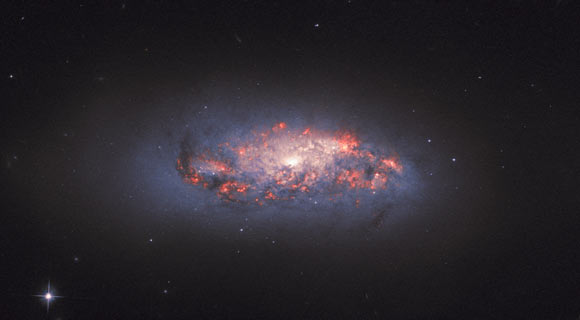The NASA/ESA Hubble Space Telescope has captured a striking new photo of the spiral galaxy NGC 972.

This Hubble image shows a spiral galaxy called NGC 972. The image is a composite of separate exposures acquired by Hubble’s Advanced Camera for Surveys (ACS) instrument. Two filters were used to sample various wavelengths. The color results from assigning different hues to each monochromatic image associated with an individual filter. Image credit: NASA / ESA / Hubble / L. Ho.
NGC 972 resides in the constellation Aries, approximately 50 million light-years from Earth.
Also known as LEDA 9788, UGC 2045 and IRAS 02312+2905, the galaxy is about 70,000 light-years across.
NGC 972 was discovered on September 11, 1784 by the German-British astronomer William Herschel.
Bright, colorful pockets of star formation can be seen in the new Hubble image amid dark, tangled streams of cosmic dust.
The orange-pink glow is created as hydrogen reacts to the intense light streaming outwards from nearby protostars.
The presence of huge star-forming regions in NGC 972, and the asymmetry of its spiral arms are probably the result of a merger with a gas-rich companion galaxy.
“We look for these telltale signs of star formation when we study galaxies throughout the cosmos, as star formation rates, locations, and histories offer critical clues as to how these colossal collections of gas and dust have evolved over time,” the Hubble astronomers said.
“New generations of stars contribute to — and are also, in turn, influenced by — the broader forces and factors that mould galaxies throughout the Universe, such as gravity, radiation, matter, and dark matter.”







